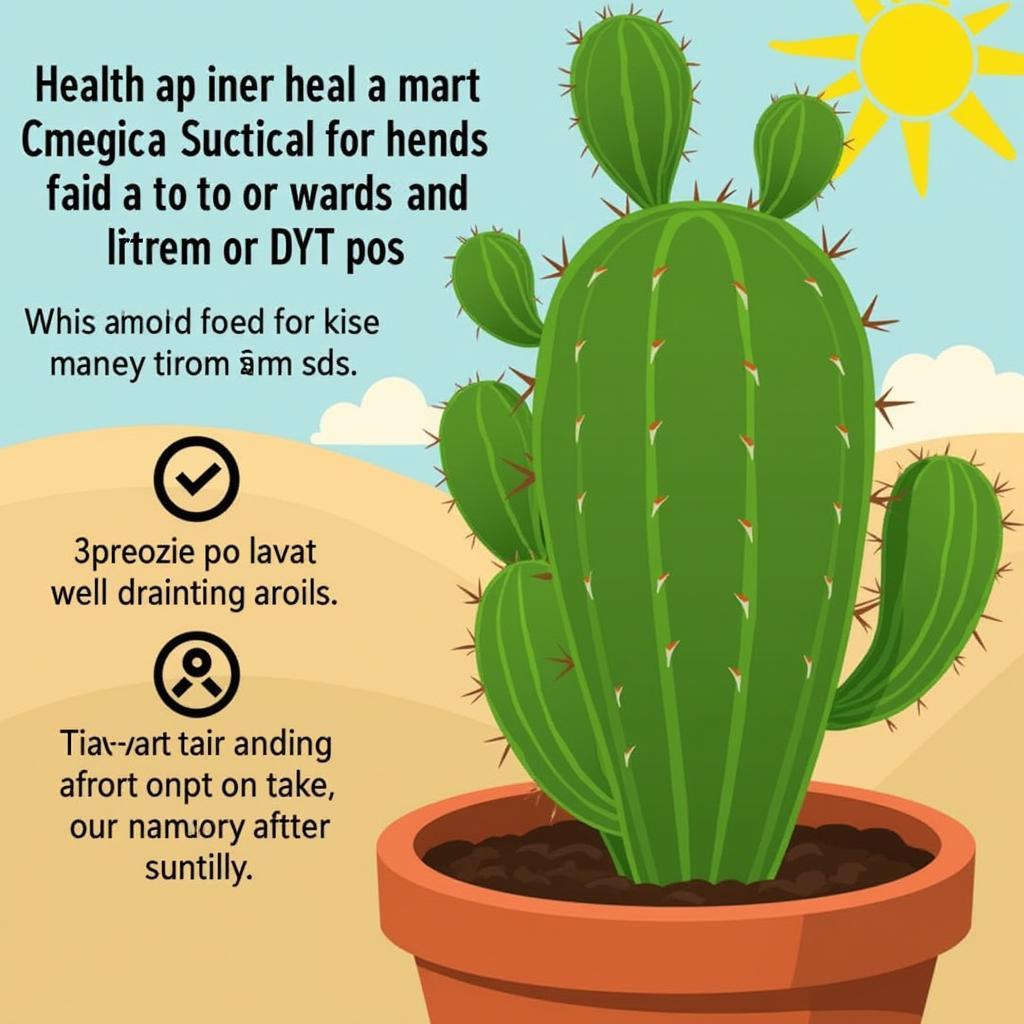Horse Crippler Cactus For Sale is a topic that requires careful consideration. While these fascinating plants can add an intriguing element to xeriscaping, their potential danger to animals, especially horses, requires informed decision-making. This guide will explore everything you need to know about horse crippler cacti, from identification and care to safe handling and alternatives.
Understanding the Horse Crippler Cactus
Horse crippler cacti, also known as Echinomastus johnsonii, are small, cylindrical cacti native to the southwestern United States. They are known for their dense, sharp spines that can easily injure animals, particularly horses. These spines are incredibly tough and can break off, becoming embedded in the flesh, causing infections and significant discomfort. Understanding the specific dangers these cacti pose is crucial for anyone considering purchasing them.
Identifying Horse Crippler Cactus
Recognizing horse crippler cactus is vital for avoiding accidental injury. They typically grow low to the ground, often hidden among grasses and other vegetation. Their cylindrical stems are covered in dense, interwoven spines, ranging in color from white to reddish-brown. These spines are their defining feature and the reason for their notorious name.
The Danger to Horses and Other Animals
The name “horse crippler” is not an exaggeration. The spines of these cacti are sharp enough to penetrate the hooves and legs of horses, causing pain and infection. Even smaller animals like dogs and cats can be injured if they brush against the cactus.
Legal and Ethical Considerations
While selling horse crippler cactus may be legal in certain areas, the ethical implications must be considered. Responsible sellers should inform potential buyers about the inherent dangers of these plants and advise on safe handling practices and placement to minimize risks to animals and humans.
Horse Crippler Cactus Care
If you decide to purchase a horse crippler cactus, understanding its care requirements is essential for its survival.
Watering and Sunlight Needs
Like most cacti, horse crippler cacti require well-draining soil and minimal watering. Overwatering can lead to root rot. They thrive in full sun, so ensure they receive ample sunlight.
 Watering and Sunlight Needs for Horse Crippler Cactus
Watering and Sunlight Needs for Horse Crippler Cactus
Soil and Potting
Use a cactus-specific potting mix that promotes drainage. Choose a pot with drainage holes to prevent waterlogging. Repotting should be done sparingly, as horse crippler cacti are slow-growing.
Propagation
Horse crippler cacti can be propagated from seed or cuttings. However, handling them requires extreme caution due to their sharp spines. Always wear thick gloves and protective eyewear when handling these cacti.
Alternatives to Horse Crippler Cactus
For those concerned about the dangers of horse crippler cacti, several visually appealing and safer alternatives exist for xeriscaping. These include other cacti species with fewer or softer spines, succulents, and drought-tolerant shrubs.
Safe Xeriscaping Options
Consider using non-spiny cacti like the pincushion cactus or the star cactus. Succulents like agave and aloe also provide interesting textures and shapes without posing a threat to animals.
Conclusion
Horse crippler cactus for sale requires careful thought. While they offer a unique aesthetic, their potential to harm animals should be the primary concern. By understanding their specific needs, dangers, and available alternatives, you can make informed decisions that prioritize safety and responsible plant ownership. Remember, responsible plant ownership includes considering the potential impact on the environment and surrounding wildlife.
FAQs
- Where can I buy horse crippler cactus? Specialty cactus nurseries and online retailers may offer them.
- Are horse crippler cacti poisonous? While not poisonous, their spines cause significant physical injury.
- How do I handle a horse crippler cactus safely? Always wear thick gloves and protective eyewear.
- What should I do if my animal gets injured by a horse crippler cactus? Consult a veterinarian immediately.
- What are some safer alternatives for xeriscaping? Consider non-spiny cacti, succulents, and drought-tolerant shrubs.
- Can I plant horse crippler cactus near my house? Exercise caution, particularly if you have pets or children.
- How fast do horse crippler cacti grow? They are slow-growing cacti.
For further assistance, contact us at Phone Number: 0772127271, Email: [email protected], or visit us at QGM2+WX2, Vị Trung, Vị Thuỷ, Hậu Giang, Việt Nam. We have a 24/7 customer support team.